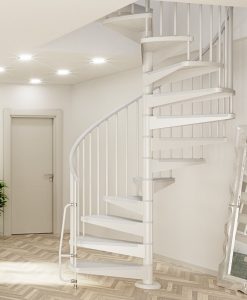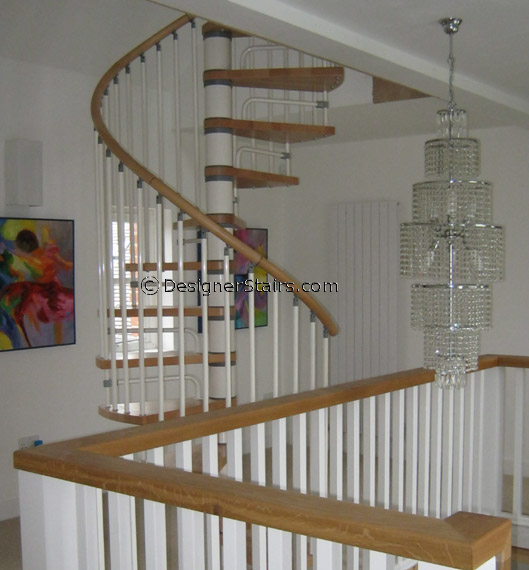So far in our Room At The Top guide, we’ve taken you through ways to assess the feasibility of using your loft as part of the living space in your home, concentrating on the structure and the available space. Now, one of the key areas to consider is access to the new loft room. We’ll look at some of the options available to you, whilst keeping within the guidelines of the Building Regulations for staircases (in the UK). To use your loft as a habitable room, you should have some form of fixed stairway – a retractable loft ladder wouldn’t be acceptable. (Click here to view the UK Building Control Regulations for Staircases.) A simple, straight flight of stairs may provide the easiest access but it also takes up the most space and for most houses this would cause a problem. But, with a little imagination and using one of the innovative and attractive staircases available, you could have an inviting and stylish access to your loft room.
 For a conventional style of staircase, using a quarter or half landing may make better use of your available space on your lower floor. This would blend well with a traditional style of house. Or consider the innovative modular staircases such as the Stilo or Genius staircases which can be installed in a tight U shape using winder treads, and these can fit into a space as small as 1500mm x 1500mm (59″ square). However, if you have limited room for a staircase, you could consider a spiral stair. A spiral stair will fit into quite a small area, a typical spiral to a loft room could only need a square or circular floor space of about 1400mm (55″) and there are even square spirals which are designed to fit into a recess or alcove. Spiral stairs are available in a myriad of styles, from contemporary metal through to traditional solid timber and many of the models come in kit form for self installation.
For a conventional style of staircase, using a quarter or half landing may make better use of your available space on your lower floor. This would blend well with a traditional style of house. Or consider the innovative modular staircases such as the Stilo or Genius staircases which can be installed in a tight U shape using winder treads, and these can fit into a space as small as 1500mm x 1500mm (59″ square). However, if you have limited room for a staircase, you could consider a spiral stair. A spiral stair will fit into quite a small area, a typical spiral to a loft room could only need a square or circular floor space of about 1400mm (55″) and there are even square spirals which are designed to fit into a recess or alcove. Spiral stairs are available in a myriad of styles, from contemporary metal through to traditional solid timber and many of the models come in kit form for self installation.
A spiral stair isn’t to everyone’s taste and it may not even fit into the space you have available. For situations where space is extremely tight, the spacesaver stair may solve your problems. This type of stair has treads which are partly cut away leaving a paddle shaped tread with the wide part on alternating treads, so that you can comfortably fit one foot on each tread. This design has a huge advantage in that it takes up a little over half the space of a conventional staircase and can be an innovative solution for access to a loft conversion consisting of one room, or one room plus a bathroom. You can see these on our Spacesaver pages.
Failing all else, the Building Regulations will allow a fixed miller’s ladder as access to a loft converted to one room – but only if nothing else will fit. I think for most people, this really would be a last resort!
And while you are assessing what space you have available for your staircase, don’t forget to keep an eye on the headroom both above and below the new stairs. A 2m (6’6″) headroom is usually required above the stairs, but the Building regulations do make some allowances for reduced headroom in some loft conversion projects.
While you are pondering on our choices of staircases, it is worth taking time to think about the safety aspect. Turning a roof space into a living area in a two storey house will effectively make it into a three storey building – with implications for fire protection and emergency escape. We’ll take a look at these issues later in the guide but, if you would like further advice, just ask the Building Control Surveyor at your local council (in the UK) who will be able to advise on all these aspects of a loft conversion.

